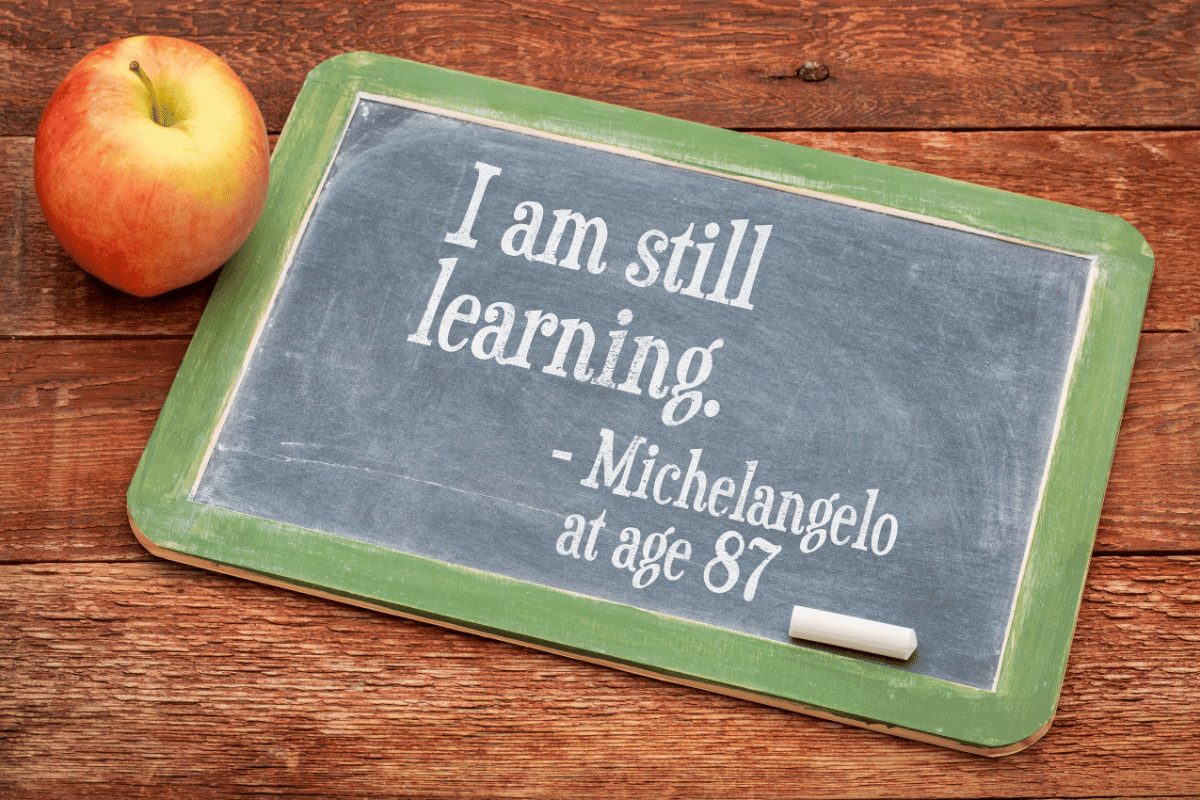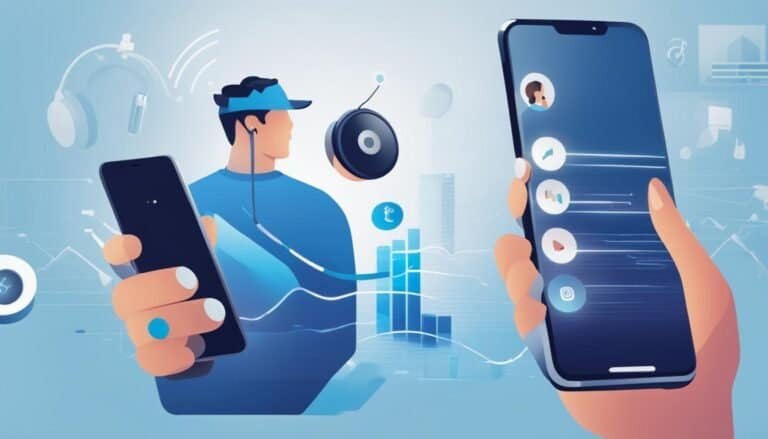Continuous Learning: Developing A Growth Mindset
|
Getting your Trinity Audio player ready...
|
I. Introduction
A. Definition of Continuous Learning
Continuous learning is the process of actively seeking, acquiring and applying new knowledge, skills, and experiences to foster personal and professional growth throughout one’s life. It involves embracing a mindset of curiosity and adaptability and taking the initiative to engage in lifelong learning activities. Continuous learning is not limited to formal education but also encompasses informal learning experiences such as self-study, online courses, workshops, and networking.
B. Importance of Continuous Learning in Personal and Professional Life
In today’s fast-paced world, continuous learning is more important than ever. The rapid advancement of technology, globalization, and evolving workplace dynamics require individuals to adapt and grow to stay relevant and competitive.
Embracing continuous learning has numerous benefits, including:
- Enhancing career prospects: Acquiring new skills and knowledge can help you advance in your current role or explore new career opportunities.
- Increasing job satisfaction: Continuously learning can help you stay engaged and motivated in your job, leading to increased satisfaction and productivity.
- Personal growth: Engaging in lifelong learning allows you to explore new interests, develop a broader perspective, and enhance your overall well-being.
- Building resilience: Continuous learning enables you to adapt to change, overcome challenges, and thrive in the face of adversity.
- Encouraging innovation: By acquiring new knowledge and ideas, you can contribute to creative problem-solving and innovation within your organization.
C. Overview of the Guide
This comprehensive guide to continuous learning will provide you with the tools and strategies necessary to develop a growth mindset and embrace lifelong learning. The guide is divided into the following sections:
- The Continuous Learning Mindset
- Setting Continuous Learning Goals
- Strategies for Continuous Learning
- Time Management for Continuous Learning
- Overcoming Obstacles to Continuous Learning
- Measuring Progress and Evaluating Success
- Cultivating a Continuous Learning Culture at Work
- Continuous Learning for Personal Growth
By following the advice and recommendations in this guide, you will be well-equipped to take charge of your personal and professional development, adapt to the changing world around you, and ultimately, lead a more fulfilling and successful life.
II. The Continuous Learning Mindset
A. Growth Mindset vs. Fixed Mindset
The continuous learning mindset is rooted in the concept of a growth mindset, first introduced by psychologist Carol Dweck. A growth mindset is the belief that one’s intelligence, talents, and abilities can be developed and improved through effort, persistence, and learning. In contrast, a fixed mindset is the belief that these traits are innate and unchangeable.
Individuals with a growth mindset are more likely to embrace continuous learning, as they see challenges and setbacks as opportunities for growth and development. They are also more likely to persevere in the face of difficulty and seek feedback to improve their performance. Conversely, those with a fixed mindset may resist learning new skills or taking on new challenges, as they fear failure or view it as a reflection of their inherent limitations.
B. Embracing Change and Adaptability
Continuous learning requires embracing change and adaptability. In an ever-evolving world, being open to new ideas, experiences, and perspectives is crucial for personal and professional growth.
Developing an adaptable mindset involves:
- Recognizing that change is inevitable: Acknowledging that change is a constant part of life can help you become more comfortable with it and view it as an opportunity for growth.
- Cultivating curiosity: Stay curious and ask questions to deepen your understanding of new concepts and ideas.
- Being flexible: Learn to adapt your approach and strategies when faced with new challenges or changing circumstances.
- Taking risks: Embrace uncertainty and be willing to step out of your comfort zone to explore new opportunities.
C. Benefits of a Continuous Learning Mindset
Developing a continuous learning mindset offers numerous benefits for personal and professional growth:
- Enhanced problem-solving skills: By embracing continuous learning, you expose yourself to new ideas and perspectives, which can lead to more innovative solutions.
- Increased adaptability: A continuous learning mindset helps you become more resilient and adaptable in the face of change, which is crucial for success in today’s rapidly evolving world.
- Improved self-confidence: As you gain new knowledge and skills, your self-confidence grows, empowering you to take on new challenges and seize opportunities.
- Stronger relationships: Continuous learning enables you to better understand and communicate with others, fostering stronger professional and personal relationships.
- Greater satisfaction and well-being: Pursuing lifelong learning can lead to a more fulfilling life, as it allows you to grow, develop, and achieve your full potential.
III. Setting Continuous Learning Goals
A. Identifying Areas for Improvement
To effectively engage in continuous learning, it is essential to identify the areas where you can develop and grow.
Some strategies for pinpointing areas for improvement include:
- Self-assessment: Reflect on your strengths and weaknesses, considering which skills or knowledge gaps may be holding you back from reaching your full potential.
- Seek feedback: Ask for constructive feedback from colleagues, supervisors, mentors, or friends to gain insight into areas where you can improve.
- Analyze job requirements: Examine the skills and knowledge required for your current role or desired positions to identify areas for development.
- Industry trends: Stay informed about industry trends and emerging skills to ensure you remain competitive and relevant in your field.
B. SMART Goal Setting
To maximize the effectiveness of your continuous learning efforts, it’s crucial to set specific, measurable, achievable, relevant, and time-bound (SMART) goals.
A SMART learning goal may look like this:
Specific: Clearly define the skill or knowledge you want to acquire.
Measurable: Determine how you will track your progress and assess your success.
Achievable: Set realistic goals that are challenging but attainable with the resources available.
Relevant: Ensure your learning goals align with your personal and professional objectives.
Time-bound: Establish a deadline for achieving your goal to maintain focus and motivation.
C. Aligning Learning Goals with Personal and Professional Objectives
To ensure that your continuous learning efforts contribute to your overall personal and professional growth, it’s important to align your learning goals with your broader objectives.
Consider the following when setting your goals:
- Career advancement: Choose learning goals that will help you advance in your current role or prepare you for future opportunities.
- Skill development: Identify key skills that will make you more effective and versatile in your profession.
- Personal interests: Pursue learning opportunities that align with your passions and interests to maintain motivation and enjoyment.
- Networking: Engage in learning experiences that provide opportunities to build connections with others in your industry or area of interest.
- Work-life balance: Consider the impact of your learning goals on your overall well-being and strive for a balance that supports both personal and professional growth.
IV. Strategies for Continuous Learning
A. Reading and Self-study
- Books: Reading books, both fiction and non-fiction, can expand your knowledge and provide valuable insights into various subjects. Seek out books relevant to your field, personal interests, or those that challenge your perspectives.
- Articles: Stay informed about industry trends and new research by regularly reading articles from reputable sources, such as journals, magazines, and newspapers.
- Blogs: Follow blogs written by experts or thought leaders in your field to gain insights into their experiences and perspectives, as well as stay updated on emerging ideas and best practices.
B. Online Courses and Certifications
Enroll in online courses or pursue certifications relevant to your learning goals. Platforms like Coursera, Udemy, edX, and LinkedIn Learning offer a wide range of courses across various subjects and skill levels, often with flexible schedules and affordable pricing.
C. Workshops, Seminars, and Conferences
Attend workshops, seminars, and conferences to deepen your knowledge, learn from industry leaders, and engage in hands-on experiences. These events also provide excellent networking opportunities to connect with like-minded professionals.
D. Networking and Peer Learning
Leverage the power of networking and peer learning to share knowledge, best practices, and experiences. Engage in professional associations, LinkedIn groups, or local meetups to connect with others in your field and foster a collaborative learning environment.
E. Mentorship and Coaching
Seek mentors or coaches who can provide guidance, support, and feedback to help you achieve your learning goals. A mentor can be a colleague, supervisor, or industry expert with experience and knowledge in your area of interest.
F. Job Rotation and Cross-functional Experiences
Explore job rotation programs or cross-functional experiences within your organization to gain exposure to different roles, functions, and projects. These experiences can help you develop new skills, broaden your perspective, and enhance your adaptability.
G. Reflective Practice and Self-assessment
Regularly engage in reflective practice and self-assessment to evaluate your progress, identify areas for improvement, and adjust your learning strategies as needed. This may involve journaling, seeking feedback, or using self-assessment tools to track your growth and ensure you stay on track towards your continuous learning goals.
V. Time Management for Continuous Learning
A. Prioritizing Learning Activities
To effectively manage your time for continuous learning, it’s essential to prioritize your learning activities. Consider the following when prioritizing:
- Relevance: Focus on learning activities that directly align with your personal and professional goals, and contribute to your overall growth.
- Urgency: Identity which learning activities are time-sensitive or necessary for upcoming projects, assignments, or career opportunities.
- Impact: Prioritize learning activities that will have the most significant impact on your skillset and overall development.
B. Creating a Learning Schedule
Establishing a learning schedule can help you allocate time for continuous learning while maintaining balance in other areas of your life. Consider the following when creating a schedule:
- Consistency: Set aside regular, dedicated time for learning, whether it’s daily, weekly, or monthly, to help you establish a routine and stay committed.
- Flexibility: Allow for flexibility in your schedule to accommodate unforeseen circumstances or changes in your priorities.
- Time blocking: Break your learning activities into smaller, manageable tasks and allocate specific time blocks for each task, ensuring you stay focused and productive.
- Breaks and downtime: Incorporate breaks and downtime into your schedule to prevent burnout and maintain your overall well-being.
C. Balancing Work, Life, and Learning
Achieving a balance between work, life, and continuous learning is crucial for long-term success and well-being. Consider the following strategies to maintain balance:
- Set boundaries: Establish boundaries between work, personal life, and learning to prevent one area from dominating your time and energy.
- Communicate with stakeholders: Inform your supervisors, colleagues, and family members about your learning goals and schedule, to manage expectations and seek their support.
- Prioritize self-care: Make time for self-care activities, such as exercise, hobbies, and relaxation, to ensure your well-being and maintain the energy needed for continuous learning.
- Periodically reassess: Regularly reassess your work-life-learning balance and make adjustments as needed to stay aligned with your goals and priorities.
VI. Overcoming Obstacles to Continuous Learning
A. Dealing with a Lack of Motivation
Maintaining motivation for continuous learning can be challenging. To overcome this obstacle, consider the following strategies:
- Set clear goals: Establish specific, measurable, achievable, relevant, and time-bound (SMART) goals to stay focused and motivated.
- Find your “why”: Connect your learning goals to your personal and professional objectives to maintain a sense of purpose and motivation.
- Celebrate progress: Acknowledge and celebrate milestones and achievements to boost your confidence and maintain momentum.
- Make learning enjoyable: Choose learning activities that align with your interests, and experiment with different learning styles to keep the process engaging and enjoyable.
B. Addressing Time Constraints
Time constraints can pose a significant barrier to continuous learning. To address this issue, consider the following strategies:
- Prioritize: Focus on the most important and impactful learning activities to make the most of your available time.
- Create a schedule: Develop a learning schedule that accommodates your existing commitments and allows for regular, dedicated time for learning.
- Utilize downtime: Take advantage of downtime, such as during commutes or breaks, to engage in shorter learning activities like reading articles or listening to podcasts.
- Set realistic expectations: Adjust your learning goals and timeframes as needed to ensure they are achievable given your time constraints.
C. Overcoming Financial Barriers
Financial barriers can limit access to continuous learning opportunities. To overcome these barriers, consider the following strategies:
- Seek out free resources: Explore free online courses, webinars, articles, and e-books to engage in continuous learning without significant financial investment.
- Apply for scholarships or grants: Investigate scholarships or grants available for professional development or continuing education in your field.
- Discuss employer support: Speak with your employer about potential financial support or reimbursement for job-related learning opportunities.
- Budget for learning: Allocate a portion of your personal budget for continuous learning, prioritizing high-impact and cost-effective learning activities.
D. Finding Support and Resources
A strong support network and access to resources can significantly enhance your continuous learning journey. To find support and resources, consider the following strategies:
- Leverage professional networks: Connect with colleagues, mentors, or industry associations for guidance, advice, and access to learning resources.
- Engage in online communities: Participate in online forums, social media groups, or discussion boards related to your field or learning goals to share knowledge and resources with others.
- Utilize local resources: Explore resources available through local libraries, community centers, or educational institutions for affordable or free learning opportunities.
- Collaborate with peers: Form study or accountability groups with friends or colleagues who share similar learning goals to provide mutual support and encouragement.
VII. Measuring Progress and Evaluating Success
A. Identifying Key Performance Indicators
To effectively measure your progress and evaluate the success of your continuous learning efforts, it’s essential to establish key performance indicators (KPIs). KPIs are quantifiable measures that help you track progress toward your learning goals. Examples of KPIs include:
- Skill proficiency: Assess your level of proficiency in a particular skill before and after completing a learning activity.
- Knowledge acquisition: Test your understanding of new concepts or subject matter through quizzes, assessments, or practical applications.
- Completion of learning activities: Track the number of courses, books, or workshops completed within a specified timeframe.
- Career advancement: Monitor changes in your job responsibilities, promotions, or salary increases as a result of your continuous learning efforts.
B. Regularly Reviewing Progress
Regularly reviewing your progress is crucial for staying on track and maintaining motivation. Schedule periodic check-ins to assess your progress against your KPIs and learning goals. During these reviews, consider the following:
- Analyze your KPIs: Examine your KPI data to determine your progress and identify areas for improvement.
- Reflect on your learning experiences: Assess the effectiveness of your learning activities and consider any challenges or successes encountered.
- Seek feedback: Request feedback from mentors, colleagues, or supervisors to gain additional insight into your progress and areas for improvement.
C. Celebrating Milestones and Achievements
Recognizing and celebrating your milestones and achievements can boost your motivation and sense of accomplishment. Some ways to celebrate your progress include:
- Share your achievements: Share your successes with friends, family, or colleagues to reinforce your sense of accomplishment and receive support and encouragement.
- Reward yourself: Treat yourself to a small reward, such as a special meal or a new book, as a way to recognize your hard work and progress.
- Reflect on your growth: Take time to acknowledge the personal and professional growth you have experienced as a result of your continuous learning efforts.
D. Adjusting Goals and Strategies as Needed
As you review your progress, it’s important to remain flexible and open to adjusting your goals and learning strategies as needed. Consider the following when making adjustments:
- Reevaluate your priorities: Assess whether your learning goals still align with your personal and professional objectives, and adjust them as necessary.
- Adapt your strategies: If you find that certain learning activities or approaches are not effective, explore alternative methods or resources to better support your growth.
- Set new goals: As you achieve your initial learning goals, set new objectives to continue challenging yourself and fostering growth.
- Maintain balance: Ensure that your revised goals and strategies maintain a balance between your work, personal life, and continuous learning to support your overall well-being.
VIII. Cultivating a Continuous Learning Culture at Work
A. The Role of Leadership in Promoting Continuous Learning
Leaders play a critical role in fostering a continuous learning culture within an organization. They can promote continuous learning by:
- Leading by example: Engaging in continuous learning themselves, and openly sharing their own learning experiences and insights with their teams.
- Setting expectations: Communicating the importance of continuous learning and encouraging team members to pursue personal and professional development.
- Providing support: Allocating time, resources, and opportunities for employees to engage in learning activities, and offering guidance and encouragement along the way.
- Recognizing and rewarding: Acknowledging and celebrating employees’ learning achievements, and linking continuous learning to performance evaluations and promotions.
B. Encouraging a Culture of Knowledge Sharing and Collaboration
A continuous learning culture thrives when team members are encouraged to share knowledge and collaborate. To foster this culture, organizations can:
- Establish knowledge-sharing platforms: Implement tools and platforms that facilitate knowledge-sharing, such as internal wikis, discussion boards, or chat channels.
- Organize learning events: Host workshops, seminars, or lunch-and-learn sessions where employees can share their expertise or learn from one another.
- Encourage cross-functional collaboration: Create opportunities for employees from different departments to work together on projects or initiatives, promoting the exchange of ideas and expertise.
- Recognize and reward collaboration: Acknowledge and celebrate instances of effective collaboration and knowledge sharing within the organization.
C. Implementing Continuous Learning Programs and Resources
Organizations can support a continuous learning culture by providing employees with access to programs and resources that facilitate their development. Some strategies for implementing these programs and resources include:
- Offering training and development programs: Develop in-house training programs or partner with external providers to offer workshops, courses, or certifications relevant to employees’ roles and career goals.
- Providing access to online learning platforms: Make online courses, webinars, or e-learning modules available to employees, allowing them to engage in self-directed learning at their own pace.
- Establishing mentorship and coaching programs: Pair employees with experienced mentors or coaches who can provide guidance, support, and feedback on their learning journey.
- Allocating time for learning: Encourage employees to dedicate a portion of their work hours to engaging in learning activities, demonstrating the organization’s commitment to continuous learning.
IX. Continuous Learning for Personal Growth
A. Lifelong Learning for Mental and Emotional Well-being
Engaging in lifelong learning can significantly contribute to mental and emotional well-being. Continuous learning can:
- Enhance cognitive function: Stimulating the brain through learning new skills or acquiring new knowledge can improve memory, focus, and problem-solving abilities.
- Boost self-esteem and confidence: Achieving learning goals and mastering new skills can foster a sense of accomplishment and increase self-confidence.
- Reduce stress and promote relaxation: Engaging in enjoyable learning activities can serve as a healthy distraction from everyday stressors and promote relaxation.
- Encourage personal growth: Lifelong learning can lead to personal growth by broadening perspectives, fostering empathy, and promoting a deeper understanding of oneself and the world.
B. Pursuing Hobbies and Interests
Exploring hobbies and interests can be an enjoyable and fulfilling way to engage in continuous learning. Consider the following strategies for pursuing your hobbies and interests:
- Join clubs or groups: Connect with others who share your interests by participating in local clubs, meetups, or online communities.
- Take classes or workshops: Enroll in classes or workshops related to your hobbies or interests, either in-person or online, to expand your skills and knowledge.
- Allocate time: Dedicate regular time in your schedule to pursue your hobbies and interests, ensuring that you prioritize your personal growth and well-being.
- Challenge yourself: Continuously set new goals or undertake new projects within your hobbies or interests to keep the learning process engaging and stimulating.
C. Volunteering and Community Involvement
Volunteering and participating in community activities can provide unique opportunities for continuous learning and personal growth. By engaging in these activities, you can:
- Develop new skills: Volunteering in various capacities can help you acquire new skills, such as project management, communication, or leadership.
- Expand your network: Connecting with fellow volunteers, community members, or organizational leaders can help you build a diverse and supportive network.
- Gain new perspectives: Working with different groups or addressing community needs can broaden your understanding of social issues and promote empathy.
- Experience a sense of purpose: Contributing to the well-being of your community or supporting a cause you are passionate about can foster a sense of purpose and fulfillment.
X. Conclusion
A. Recap of Key Points
Throughout this guide, we have explored various aspects of continuous learning, including:
- The importance of continuous learning in personal and professional life.
- Developing a continuous learning mindset by embracing growth, change, and adaptability.
- Setting and aligning learning goals with personal and professional objectives.
- Implementing various strategies for continuous learning, such as self-study, online courses, mentorship, and reflective practice.
- Managing time effectively to balance work, life, and learning.
- Overcoming obstacles to continuous learning, including motivation, time constraints, financial barriers, and lack of support.
- Measuring progress and evaluating success through KPIs, regular reviews, and adjusting goals as needed.
- Cultivating a continuous learning culture at work by promoting leadership, collaboration, and implementing learning programs.
- Engaging in continuous learning for personal growth through lifelong learning, pursuing hobbies, and volunteering.
B. Encouragement to Embrace Continuous Learning
Embracing continuous learning is an investment in your personal and professional growth. By committing to a continuous learning journey, you can unlock new opportunities, enhance your well-being, and contribute to the success of your organization and community.
C. Call to Action for Personal and Professional Development
As you move forward, we encourage you to take the first step in your continuous learning journey. Reflect on your goals, explore learning opportunities, and engage in activities that foster your growth. Remember, the pursuit of knowledge and self-improvement is a lifelong endeavor, and the more you learn, the more you grow. So, embrace continuous learning, and begin transforming your personal and professional life today.








